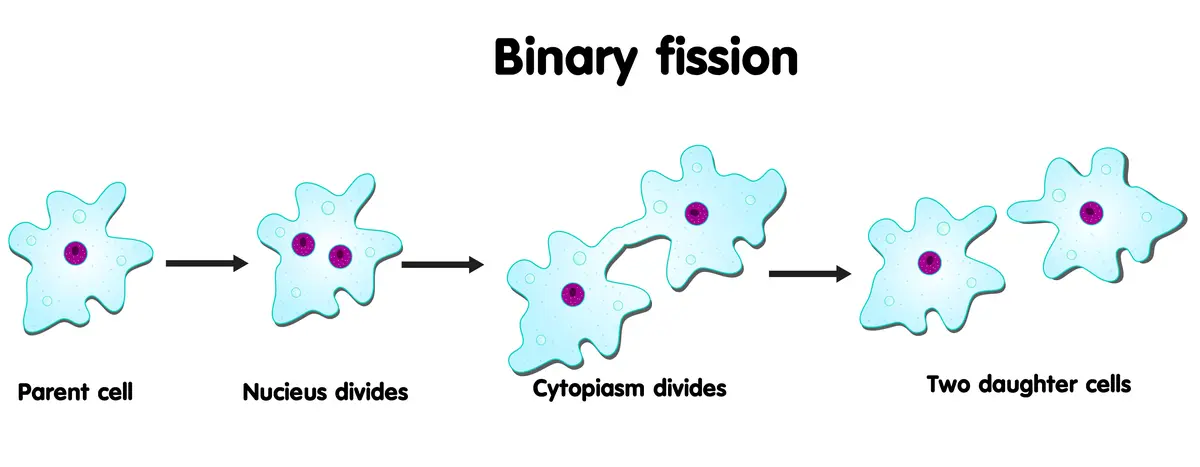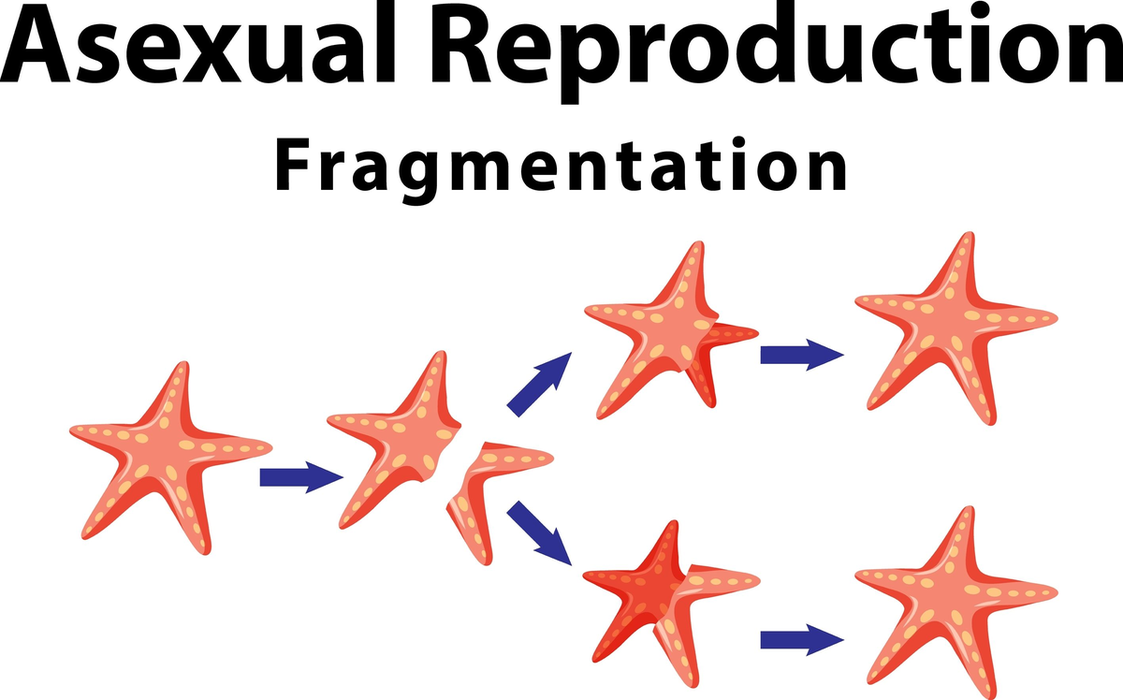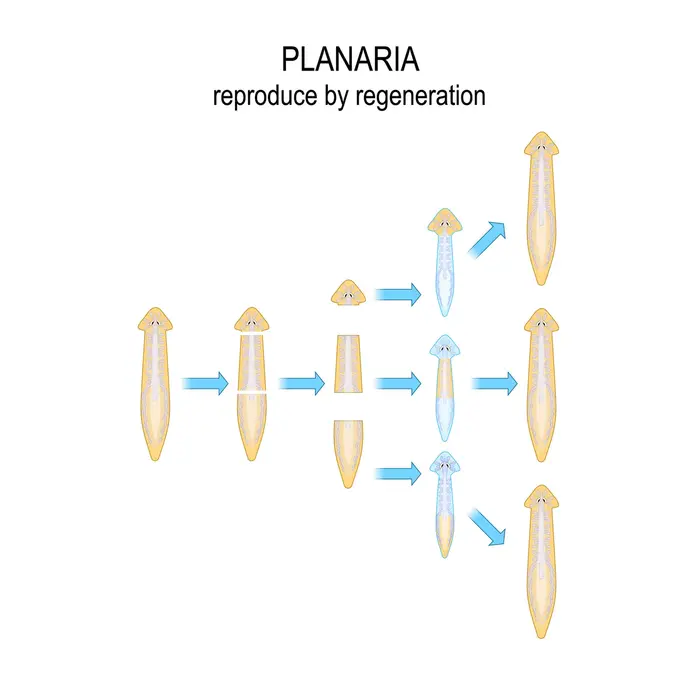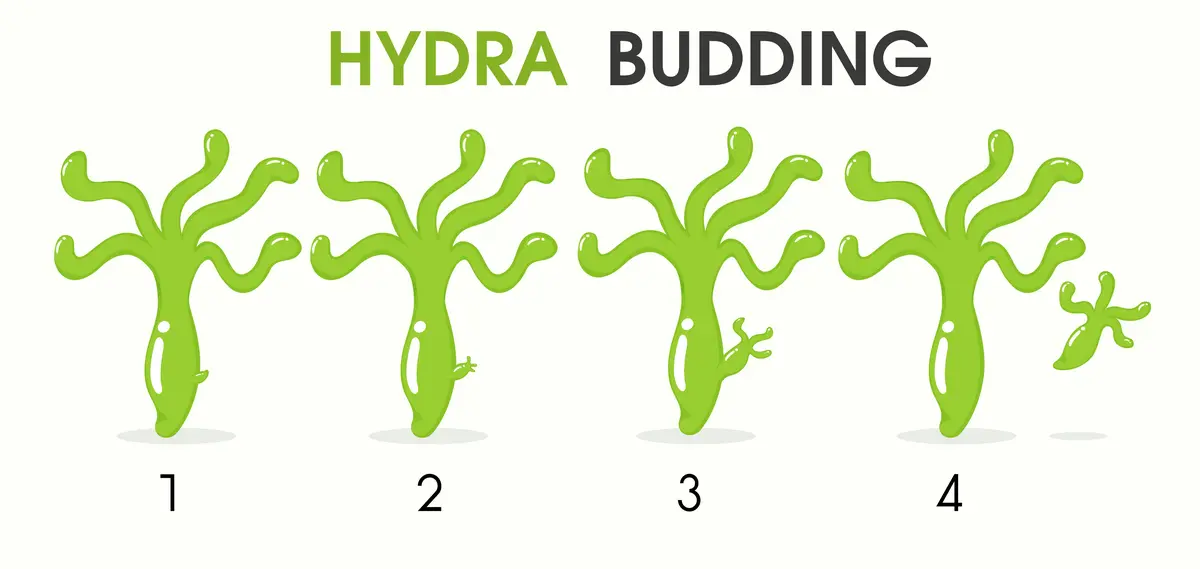Introduction
Through the process of reproduction, an organism gives rise to offspring that are biologically related to the organism.
Reproduction enables and ensures species continuity generation after generation.
There are essentially two types of reproduction:
- Sexual reproduction
- Asexual reproduction
Asexual reproduction
The simplest type of reproduction is asexual reproduction, which doesn’t involve gamete creation, meiosis, or fertilization. These types of reproduction only need one parent, and the resulting individuals, or clones, are genetically identical. Asexual reproduction is also referred to as clonal propagation. Animals can reproduce asexually through a variety of mechanisms, including Binary Fusion, Fragmentation, Budding, Parthenogenesis, Gemmules, Regeneration, etc.
Features of asexual reproduction
- A single parent is involved.
- Neither fertilization nor gamete formation takes place.
- This reproduction process happens in a relatively short amount of time.
- The organisms multiply and grow swiftly.
- The offsprings are similar genetically.
Types of asexual reproduction
- Binary Fission
-
- Bacteria and amoebas are the two main species that utilize this method of reproduction.
- This occurs when the DNA of the parent bacteria breaks into two fragments, each of which has its DNA.
- As a result, the parent cell splits into two identical daughter cells.

- Fragmentation:
-
- In this method of asexual reproduction, the parent organism is divided into multiple fragments, each of which develops into a new organism.
- This method of reproduction is mostly seen in starfish. For instance, the arm can give birth to an entirely new organism.

- Gemmules:
-
-
- In this kind, the parents release a highly developed mass of cells, which eventually give rise to offspring.
- The development of these gemmules occurs when parents face unfavorable environmental conditions.
-
- Parthenogenesis:
-
- In this type of asexual reproduction, the female organism produces eggs without fertilization, These eggs give birth to offspring.
- Examples are lizards, certain fish, and insects.
- Regeneration:
-
- Regeneration is the replacement of a missing part or the growth of an organism’s entire body from a small portion (morphallaxis) (epimorphosis).
- It is primarily found in planaria, sponges, amoebas, and many other organisms.
- There are 2 types of regeneration-
- Reparative regeneration: Only some kinds of damaged tissues are capable of regeneration.
- Restorative regeneration: In this, severed body parts can be restored or grown into a complete body.

- Budding:
-
- In this type of reproduction, the child grows on the parent’s body much like a bud. Echinodermata and Hydra are two well-known examples of this type of asexual reproduction.
- Here, the bud begins to live independently after separating from the parent plant.
- There are two types of bidding-
- Exogenous or External budding: A bud forms on the exterior of the body in this sort of budding. This growing bud learns to live alone after becoming separated from its parent. Newly formed buds have two choices: they can remain attached to their parents or they can detach and create their offspring.
- Endogenous or internal budding: In a few marine sponges, buds form inside the bodies of the sponge parents (e.g. Spongilla).

Advantages of asexual reproduction
- An organism can give birth to a large number of offspring, swiftly increasing that species’ population.
- There is no need for another parent organism since asexual reproduction involves only one parent.
- Animals can reproduce asexually without their gametes fusing, thus gamete formation is not required.
- Because mating is not required, less energy is used.
- Sexual reproduction is outpaced by the offspring’s rate of asexual reproduction.
Disadvantages of asexual reproduction
- Population growth is accelerating due to asexual reproduction, therefore difficult to control the population of only one species.
- They compete with one another since both species rely on the same habitat for survival.
- The atmosphere must be conducive for both the parent and the offspring.
- Children are biologically identical to the single-parent organism.
- Genetic variety does not exist in this type of reproduction.
Summary
In conclusion, asexual reproduction is a sort of reproduction in which an offspring is born from a single parent. Since the newly reproduced organisms are physically and genetically similar, they are genetic clones of their parents. Asexual reproduction is present in multicellular and unicellular animals. During this reproduction, gamete fusion does not take place. There are various types of asexual reproduction- such as fragmentation, binary fission, regeneration, etc.
Frequently Asked Questions
1. Different types of binary fission.
Ans: There are 4 types of binary fission-
- Simple binary fission: This fission can occur through any organism’s plane. Eg- Amoeba.
- Longitude binary fission: It is also referred to as longitudinal binary fission since it takes place along the longitudinal plane. Longitude binary fission is a process that occurs in flagellates like Euglena.
- Transverse binary fission: The cell division takes through the transverse plane. Prominent examples of this binary fission include Paramecium, Planaria, Diatoms, and bacteria.
- Oblique binary fission: In this process, the cytoplasm divides obliquely. Oblique binary fission takes place with cerium.
2. What does Hermaphrodite mean?
Ans: Hermaphrodite or bisexual animals are those that have both male and female reproductive systems. Earthworms and snails are a couple of examples.
3. What is strobilation?
Ans: Strobilation is the practice of repeatedly forming similar segments through the budding process. A strobila (also known as a scyphistoma) larva is a segmented portion of the body, while an ephyra larva is a segmented larva (a coelenterate).